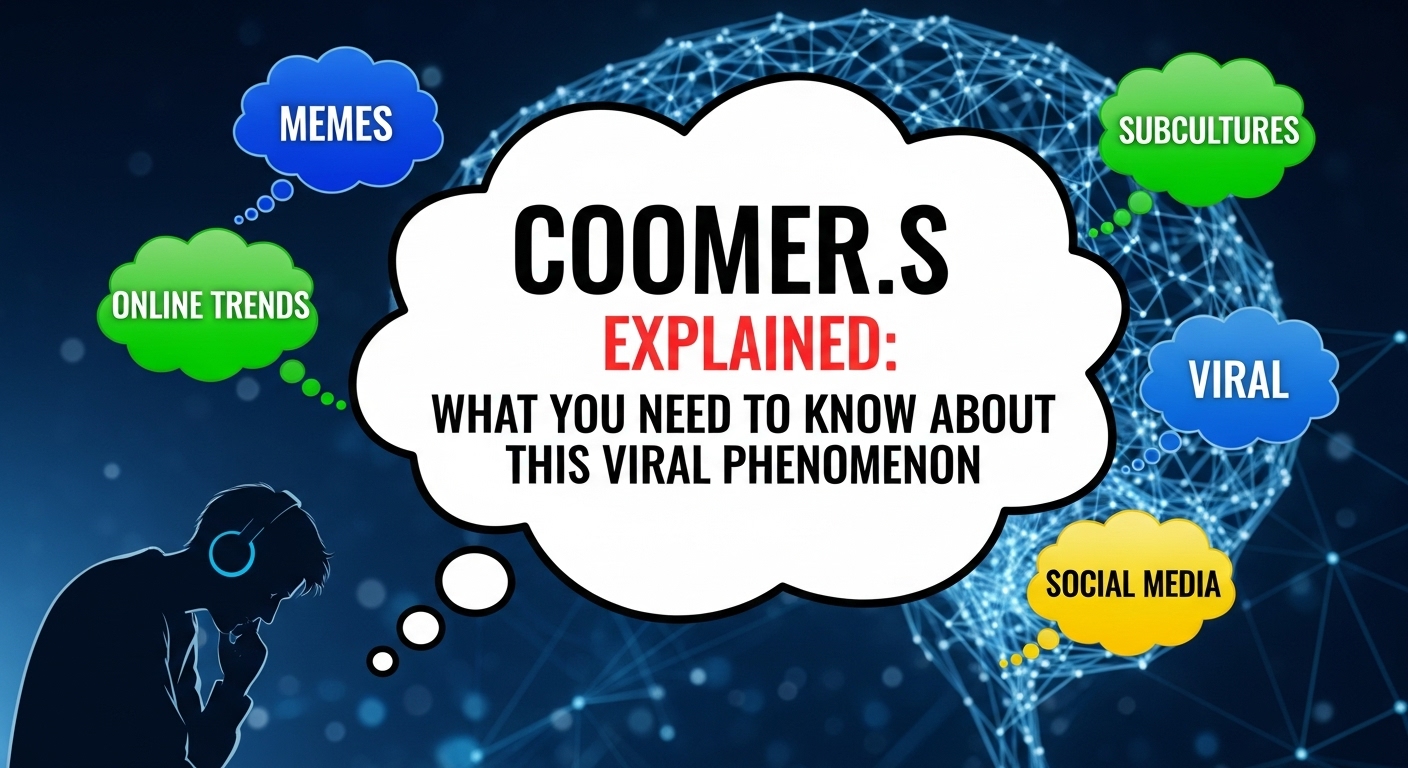.In today’s digital landscape, trends can bloom overnight and spread like wildfire. One such trend that has captured the attention of internet users is the term “coomer.” This quirky label has sparked countless memes, discussions, and even controversies. But what exactly does it mean? Why has it become a viral phenomenon? As we dive deeper into this intriguing cultural meme, we’ll explore its origins, implications, and the psychology behind those who identify with it. So buckle up—let’s unravel the world of coomer.s together!
The Origin of the Term
The term “coomer.s” has its roots in internet slang, emerging from online forums where discussions about adult content flourished.
It originally referred to individuals who excessively indulged in pornography and masturbation. The word gained traction on platforms like 4chan, where memes began to circulate featuring the character embodying these behaviors.
Visual depictions often portrayed coomers as socially awkward or obsessive figures, tapping into a broader critique of internet culture.
As it spread across other social media channels, the term morphed into both a label and a stereotype.
Its rise highlighted underlying issues surrounding addiction to digital stimuli and sexual gratification. This evolution reflects more than just humor; it points toward deeper societal conversations about mental health and personal habits within our tech-driven world.
How it Became a Viral Phenomenon
Coomer.s emerged from the depths of internet culture, quickly catching fire across various platforms. It initially surfaced on forums like 4chan, where users began to discuss compulsive behaviors related to adult content consumption.
Memes featuring the Coomer character, often depicted as a disheveled figure in front of a computer screen, spread rapidly. This humorous yet unsettling image resonated with many who identified with its message about excessive indulgence.
As social media amplified these discussions, more users joined in. TikTok and Twitter played pivotal roles in amplifying the phenomenon further by giving it a catchy name. The term became shorthand for those struggling with unhealthy habits around porn consumption.
The relatability factor contributed significantly to its viral nature. As individuals shared their own experiences or frustrations, Coomer.s transformed into both an inside joke and a cautionary tale within online communities.
The Negative Connotations and Stereotypes Associated with Coomers
Coomers often face a barrage of negative stereotypes. These individuals are frequently viewed as socially awkward or lacking in ambition. Many people equate the label with addiction to pornography and an inability to form meaningful relationships.
This stereotype can lead to isolation, both online and offline. The term paints a bleak picture of someone trapped in their habits, devoid of personal growth or productive interests.
Moreover, those labeled as coomers may struggle with self-esteem issues. The narratives surrounding them can engender shame rather than understanding.
The impact is multifaceted—while some embrace the identity humorously, others feel pigeonholed into a narrow perception that doesn’t reflect their true selves. Misunderstandings about coomers contribute to broader stigmas surrounding sexuality and mental health.
The Impact on Online Communities and Individuals
The rise of coomer.s has significantly altered online dynamics. Many communities now grapple with the prevalence of this behavior, often leading to polarized discussions.
Some individuals find themselves trapped in echo chambers, where unhealthy habits are normalized. This can create an environment that fosters addiction rather than support or growth.
Conversely, there are also groups forming around recovery and awareness. These spaces encourage users to share experiences and strategies for overcoming compulsive behaviors related to cooming.
Yet, the stigma remains potent. Members who identify as coomers may feel alienated from broader society. In turn, this fuels a cycle of isolation and guilt that is difficult to break.
Online interactions shaped by coomer culture challenge traditional norms about relationships and intimacy. The impact ripples beyond screens into real-life connections, reshaping how individuals view their own desires and boundaries.
Understanding the Psychology Behind Cooming
Cooming is more than just a trend; it’s rooted in psychological patterns. Many individuals find themselves drawn to instant gratification, which can be psychologically satisfying but ultimately empty.
This behavior often stems from a mix of loneliness and stress. People may use cooming as an escape from reality, providing temporary relief but lacking long-term fulfillment. The ease of access to adult content plays into this cycle, reinforcing compulsive habits.
Moreover, social validation through online communities can create a sense of belonging. However, it often encourages unhealthy comparisons and unrealistic expectations about intimacy.
The brain’s reward system responds powerfully to these stimuli. Each interaction activates dopamine release—fueling further engagement with the cycle of cooming rather than addressing underlying issues like anxiety or depression.
Understanding these elements sheds light on why some struggle to break free from coomer habits and highlights the importance of mental health awareness in navigating this phenomenon responsibly.
Ways to Overcome Coomer Habits and Avoid Falling into the Trap
Breaking free from coomer.s habits requires a conscious effort and some strategic changes. Start by identifying triggers. Recognizing what leads you down the rabbit hole can empower you to make different choices.
Set limits on screen time. Allocate specific hours for online activities, especially those that promote unhealthy consumption patterns. This simple change can create distance between you and your impulses.
Engage in alternative hobbies or activities. Find interests that excite you outside of digital spaces, such as reading, exercising, or learning a new skill. These pursuits can fill your time meaningfully while steering clear of temptation.
Connect with supportive communities offline or online where healthy discussions take place. Sharing experiences with others who understand can provide motivation and accountability.
Mindfulness practices like meditation may also help cultivate self-awareness, allowing better control over urges when they arise.
Conclusion: The Future of Coomer Culture and Its Effects on Society
As we look ahead, the future of coomer culture raises important questions about its impact on society. With the rise of digital media and easy access to adult content, it’s essential to consider how this phenomenon will evolve. Coomers are not just a meme; they represent broader issues related to addiction, self-esteem, and mental health.
The term has become shorthand for a lifestyle that many might find troubling. However, it also highlights significant conversations regarding sexual behavior in the digital age. Online communities surrounding this subject may continue to grow or shift as awareness increases around healthy habits.
Society’s perception of coomers could transform as discussions about sexual wellness gain traction. Platforms dedicated to education about sexuality can play an influential role in reshaping narratives associated with cooming behaviors.
Understanding these dynamics is crucial for both individuals and communities navigating their way through modern relationships and personal satisfaction. The challenge lies in balancing acceptance with awareness—encouraging healthier practices while acknowledging that some people may struggle within this framework.
As new generations emerge into this landscape, adapting attitudes toward pleasure-seeking habits will be vital in shaping a more informed dialogue around intimacy and self-control online.

